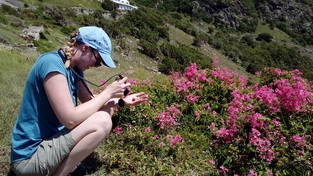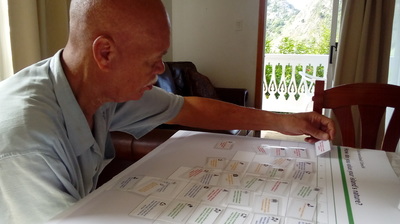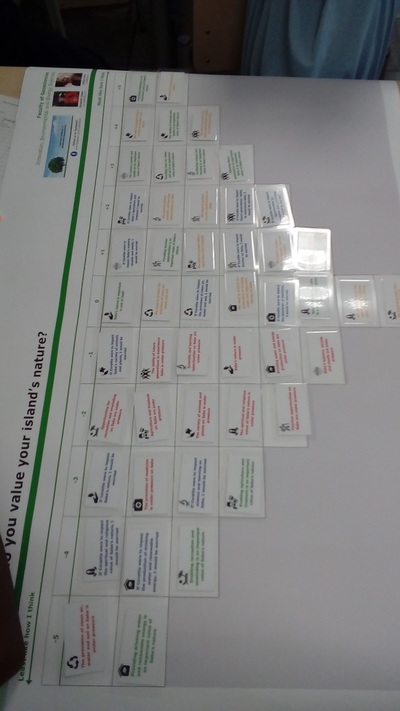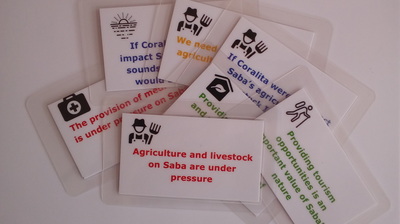| One of the main ingredients of PhD research is experiments that provide answers to your research questions. In natural sciences this might typically involve work in a lab, while in social sciences data is often gathered through fieldwork. The “field” in fieldwork refers to a location you go where the phenomenon you are interested in occurs. This could be a peanut butter factory if you’re interested in the work ethos of Calvé, or the Caribbean, if you’re as lucky as I am. I’ve been on Saba for a month now gathering data for my research on the management of invasive alien plant species. |
"You know, what you should really be studying..."
First of all, the invasive character of Coralita means that everyone knows it, which make it easier for us to get people involved, but also means everyone has their own view on what our research should entail. On a single day I will talk with someone who thinks Coralita is a major threat to agriculture, another person who says it’s an attraction for tourists, while a third is afraid it might smother endemic plant species. Being passionate about nature as anyone on such a beautiful island should be, Sabans are never shy to tell me what I should be researching, what the outcome of that would most probably be and which course of action would therefore be warranted. One afternoon on the main square and the direction of our study has changed 180 degrees. Twice. This challenge is linked to a second incongruity between reality and models, namely the intricate links between Coralita and other land use dynamics on Saba.
The bigger picture that just keeps getting bigger
When in Utrecht, I study the invasive alien plant Coralita on Saba and St. Eustatius. When on Saba, Coralita is merely one piece of the puzzle of declining agriculture, free-roaming goats, hurricanes, the global economic crisis and import taxes between Saba and St. Maarten. For people here, all these phenomena are interlinked, and when I interview them about Coralita, we invariably end up talking about those topics as well. Of course it's important to see the bigger picture, but how to give all these elements a place in our project without losing focus?
Thirdly, an interviewing method I’m applying turns out to be a bit too abstract to part of the respondents, forcing me to be more selective in choice of participants than I’d like to be. I ask participants to organise 48 cards with statements along a continuum from most like how I think to least like how I think. Additionally, only two cards can be placed at the extremes, three in the next column towards the centre, etcetera. This technique is known as Q methodology and often used in psychological research.
Be like...Coralita
These are some of the challenges faced when conducting fieldwork, but the good thing about them is that they sprout relevant data in themselves. Sabans’ views on what my research should do, the context in which Coralita should be understood and the reasons why Q method doesn’t fit every participants’ frame of thought are indispensable insights for our project. The challenge is to put these to good use instead of being frustrated about reality not fitting your model. Which is what I sometimes think a PhD is truly about; being flexible yet persistent. Just like Coralita.




 RSS Feed
RSS Feed
